North America’s most arduous–and addictive–race
Published on August 22nd, 2018
For nearly two decades, the Worrell 1000 set a high bar for extreme adventure among the beach cat crowd. When it died after the 2002 edition, attempts to resurrect it failed, but a solid organization is now bringing back the legend in 2019.
In this report by Kelley King from the May 27, 2002 issue of Sports Illustrated, she follows that final race and excites us in how a new generation of sailors will soon test themselves again.
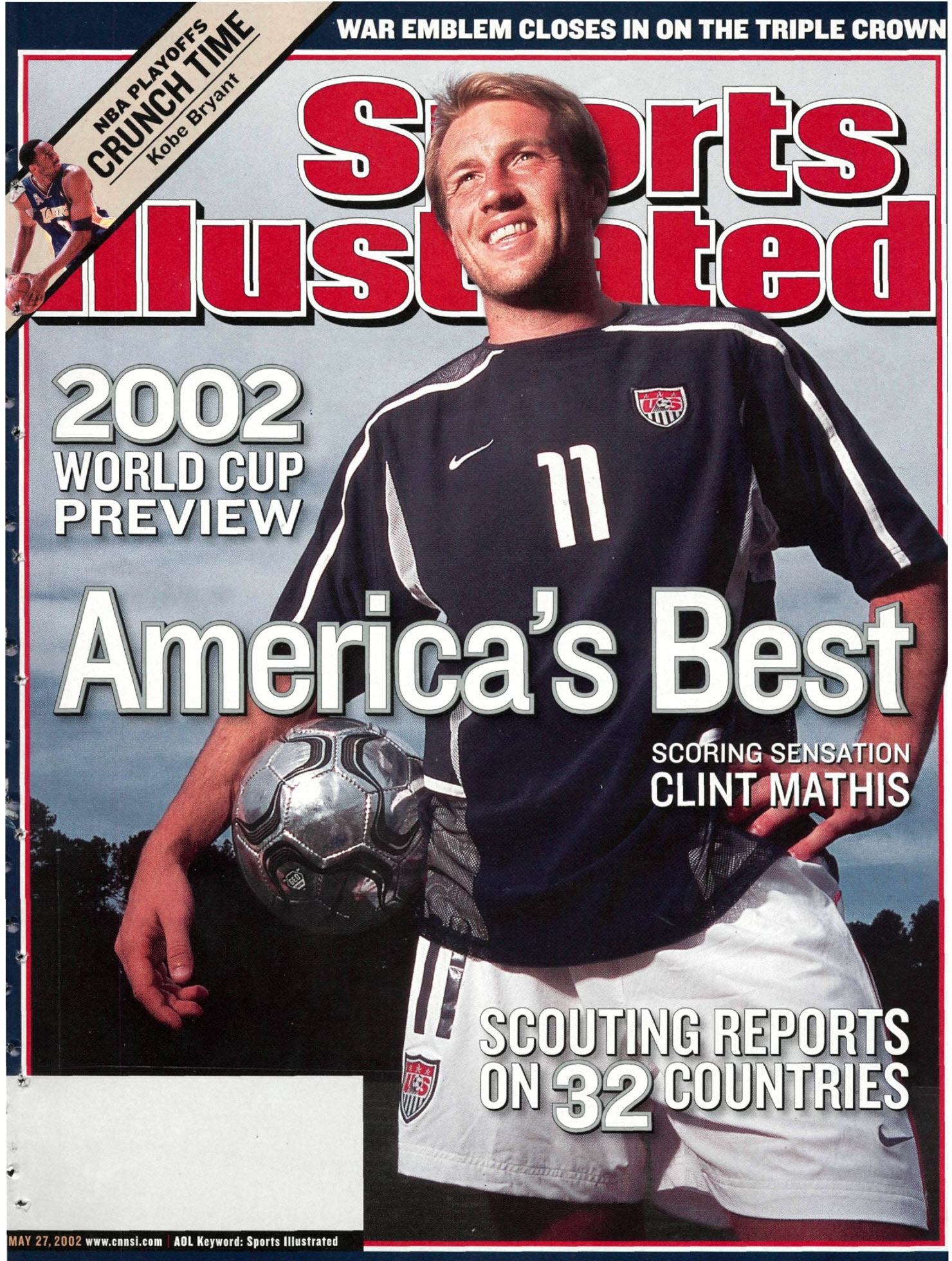 If coastal Carolina is the Graveyard of the Atlantic, as it has long been known, then Cape Hatteras reserves a quarter-mile plot for racing sailboats. On the afternoon of May 24, as tidal currents curling around the cape’s long sharp nose kicked up a spin cycle that even the most experienced skippers would want to circumvent, a fleet of 17 catamarans lurched straight across the whitewater on their way to Virginia Beach.
If coastal Carolina is the Graveyard of the Atlantic, as it has long been known, then Cape Hatteras reserves a quarter-mile plot for racing sailboats. On the afternoon of May 24, as tidal currents curling around the cape’s long sharp nose kicked up a spin cycle that even the most experienced skippers would want to circumvent, a fleet of 17 catamarans lurched straight across the whitewater on their way to Virginia Beach.
Spectators on the dunes hollered and hid their eyes–“It’s like the grandstands of NASCAR, where they cheer for you to die,” one of the sailors said–as six boats toppled into the waves. While some of the competitors emerged, drenched and windblown, from the most harrowing stretch of the 2002 Worrell 1000 catamaran race, others dangled from the edges of their fallen boats in an effort to get vertical.
They were 13 days into the 14-day race up the East Coast, and they were faring pretty well, considering that in last year’s race two competitors broke their legs, others broke ribs and five of the 21 teams failed to finish.
Conceived by a pair of brothers over a couple of beers in 1974 as an antidote to round-the-buoy yacht-club yawners, the Worrell makes the Volvo Ocean Race look like a Princess line cruise. The concept is simple–and outlandish to anyone who has ever spent more than an hour perched on a catamaran:
Two-person teams (a skipper and crew) on 20-foot beach-type catamaran cover a 12-leg, 1,000-mile route from the placid shores of Miami to the rollicking waters off Virginia Beach. Each leg is a sprint, lasting from five to 15 hours, and is separated from the next by a few hours of rest on shore. The team with the lowest total time wins.
Because victors don’t receive so much as a cent and, in some less organized years, not even a trophy, contestants, who range from weekend warriors to the occasional America’s Cupper looking for a change of pace, spend thousands of dollars and two weeks of hell on water for a year’s worth of bragging rights.
“It’s not a sane thing to do,” admits Matt Struble, a U.S. champion catamaran racer who won the 2000 Worrell. “It’s the Everest of sailing–you do it to say you did it.”
So compelling is the event that last year, one day after the final leg of the most gruesome Worrell in history, three teams had already signed up to do it again in 2002. In all there would be 19 eager entrants in this year’s race.
Jan. 1, 2002: Preparation
In three Worrells skipper Todd Hart of Manteo, N.C., has never placed better than eighth. Last year, after he maxed out his Visa card to finance his effort, he and his crew had so many equipment failures that they wound up 15th out of 16 finishers.
In the spirit of the new year Hart, 35, has resolved to get his priorities straight. He quit his full-time job as a boat carpenter to devote himself to preparing Team Caribbean Cat Fever for his fourth Worrell. “Yacht owners tend to want things done on time, and that just didn’t fit into my Worrell schedule,” says Hart, who now freelances as a carpenter. “This race is like a drug. I’ve tried to quit, but I can’t.”
Unable to cajole last year’s crew into another go-round, Hart has recruited Davis Murray, a yacht repairman in St. Thomas, Virgin Islands. With matching beer bellies–“We’ll be feared mainly in the bars at each port,” says Hart–the duo outweighs the next-heaviest team by 40 pounds. “That will hurt us only if the wind is light,” says Hart. “We’re hoping it blows like stink.”
Because each Worrell team spends a minimum of $15,000 for its catamaran, safety gear, spare parts and accommodations between legs, most entrants seek corporate sponsors. Although Murray has brought in a couple of thousand from a spaghetti-dinner fund-raiser in St. Thomas, Hart has failed to sell his endorsement. He looks on the bright side. “Having a sponsor means you’re racing for someone else,” says Hart. “I do this because I love it.”
May 5: Before the Race
As the sun sets on the eve of the 2002 Worrell, teams mingle on the pool deck of Miami’s Holiday Inn South Beach Resort. The beach in front of the hotel serves as the launching point for the race’s first leg, to Fort Lauderdale. Crew Alex Shafer is popping tops off Corona bottles while his skipper, Nigel Pitt, is doling out lime wedges.
While Shafer, the vice president of a utility company in Eustis, Fla., and Pitt, a residential contractor from Hartwell, Ga., could underwrite their own Worrell effort, they put together a deal with clothing manufacturer Tommy Bahama a few months before last year’s race. Tommy Bahama is taking care of the team’s Worrell-related bills, including this prelaunch party.
“The company doesn’t care if we win, only that we go about this the way Tommy would–with style and class,” says the British-born Pitt, runner-up in the 2001 Alter Cup, the world’s top round-the-buoy catamaran race.
Big-time sponsorship has its privileges. While all Worrell catamarans must be the same model–an Inter 20, made by Performance Catamarans–only Team Tommy has an onboard global positioning system, which allows visitors to the company’s website to track Pitt and Shafer’s progress. And while every team has a ground crew of three or so friends or relatives who drive up the coast with spare parts, duct tape and encouragement, Team Tommy has a support staff of 10, including a doctor.
May 6: Leg 1, Miami to Fort Lauderdale
By race day the mood is less collegial. Team Alexander’s skipper, Brian Lambert, a 36-year-old architect, and crew, Jamie Livingston, a 39-year-old computer programmer, are on the beach before any of their competitors, making last-minute preparations on their catamaran. Across the boom they have written a series of what look like very complex measurements: 3.263., 10, 45.6 0, [square root] 961.4. “It doesn’t mean anything!” the impish Livingston whispers. “We want to make the others nervous.”
No team is more experienced in the art of Worrell war than Lambert and Livingston, South Floridians who have raced together for four years. Both say that the Worrell is mainly a mental test. “The navigation is easy–just keep the continent on your left,” says Livingston. “Chemistry and focus are essential. After two hours it’s anyone’s game. After five, only a few of the teams can separate themselves from the pack.”
When the starting horn blows at 5:30 p.m., the beefiest member of each team’s ground crew gives his boat a mighty push into Miami’s lazy aquamarine tide. As the catamarans make the left turn northward, crossing one another’s tacks like a fleet of Indy cars, dozens of oil-slicked sunbathers gaze after them.
May 7: Leg 3, Jensen Beach, Fla., to Cocoa Beach, Fla.
The sailing community follows the Worrell with cultish curiosity. During a single hour last year the sailing website (www.catsailor.com) received 28,000 hits. This year the site delivers breathless hourly updates, including a play-by-play of Leg 3’s nip-and-tuck finish at Cocoa Beach, in which Team Tybee Island edges out Team Alexander’s.
Not bad for a race that was born of a barroom bet. In 1974 Chris Worrell, who owned a Virginia Beach restaurant with his brother, Michael, said that no one could sail a 16-foot catamaran from Virginia to Florida. Michael took the challenge, and after 20 days at sea (and two hurricanes) he came ashore in Fort Lauderdale and began to dream up ways to lure the world’s best cat sailors into a contest of wills.
Although competitors now come from as far away as South Africa, race in slightly longer boats and travel south-to-north to take advantage of more favorable winds, little has changed since the inaugural Worrell, in 1976.
Sitting in a bar at a Cocoa Beach motel, Michael Worrell, 59, the race director (Chris died in ’94), talks about finding a television network to cover the race and a sponsor to pony up prize money.
“I have a business plan, but this race is more about the business of survival,” he says. “It’s exhilarating to know that you can still go out in the middle of the ocean and do something in which if you get in trouble, no one’s right there to help you.”
May 10: Leg 6, Jacksonville to Tybee Island, Ga.
This morning catsailor.com reports, “Everyone is wondering about Team Tommy Bahama.” Team Tommy, an early favorite, is in sixth place heading into the longest leg, a 121.3-mile pull into the Peach State.
As the morning breeze out of Jacksonville blows a sickly five knots–the only thing worse than gale-force winds is no wind at all–Pitt and Shafer decide to seize the day, and the ground crew leaps to prepare the boat for the marathon leg. In the excitement a crew member neglects to run the mainsheet through the traveler car on the back beam, leaving the skipper unable to manipulate the mainsail.
After Shafer fixes the problem, Team Tommy catches a southerly zephyr and arrives on Tybee a searing seven hours and 46 minutes later, on the heels of leg-winner Team Castrol. The finish pushes Tommy into third place overall.
Besides hungover ground crew members, nothing wreaks havoc on equipment more than the hazards the teams encounter past the Deep South breakers. Loggerhead turtles the size of Volkswagens have snapped dagger boards over the years. And close encounters with cabbage-head jellyfish twice pop Team Caribbean Cat Fever’s leeward rudder en route to Tybee. After losing 10 minutes to the invertebrates, Hart and Murray sail into port in 11th place.
May 11: Leg 7, Tybee Island to Isle of Palms, S.C.
Giant sea creatures are daunting, but the race’s two nighttime legs–to Isle of Palms and from there to Myrtle Beach–have added to the Worrell’s hard-core reputation. The boats move out of Georgia just before sunset and arrive in South Carolina in the early morning, only to depart again that evening. One year a team that found itself grounded on a colossal sandbar well offshore simply curled up in the jib and slept, waiting for the sun and tide to come up.
“It’s pitch black–you’re lucky if you can see each other’s sails,” says Pitt. “And you’re still doing 30 knots.”
With no moon to guide the teams through the tidal currents and unmarked reefs around South Carolina this year, experience proves key. Team Alexander’s feels its way to Isle of Palms in seven hours and 41 minutes to move into second place.
May 17: Leg 11, Cape Hatteras, N.C., to Kill Devil Hills, N.C.
With 20-knot winds from the southwest at their backs, Team Tommy, coming off a first-place finish in the previous leg, and Team Alexander’s, which is all too familiar with the perils of Cape Hatteras, slice through the whitewater like champion kayakers.
Team Caribbean Cat Fever, a dozen boats back, doesn’t merit quite as many oohs and ahhs from the audience in the dunes. After a broken spinnaker extension left them in last place yesterday, Hart and Davis have to contend with a snapped rudder attachment before they pass Hatteras.
They tiptoe by the cape’s point without capsizing but make two pit stops along the beach before reaching the finish at Kill Devil Hills. On the second stop Hart takes a leg from an abandoned beach chair to splint his rudders together.
Later, peeling off his sopping gear, Hart has a weary chuckle at his own expense. “Yesterday it was bad parts, today it was bad luck,” he says. “That’s O.K. I’m looking at the turtles, checking out the landscape. There’s more to this race than the race.”
Hart’s house, which he shares with his wife, Jackie, and 11-month-old daughter, Kiersten, is just a few miles from where he sits, but stopping short of the Virginia Beach finish line–which Team Alexander’s will cross in a Worrell record 71 hours, 32 minutes and 22 seconds for its second consecutive victory–is not an option. For one more day he will go where the wind takes him.
“It’s like the grandstands of NASCAR, where they cheer for you to die,” says one sailor of the spectators who watch from the shore. “Having a sponsor means you’re racing for someone else,” says Hart, in his fourth Worrell. “I do this because I love it.”


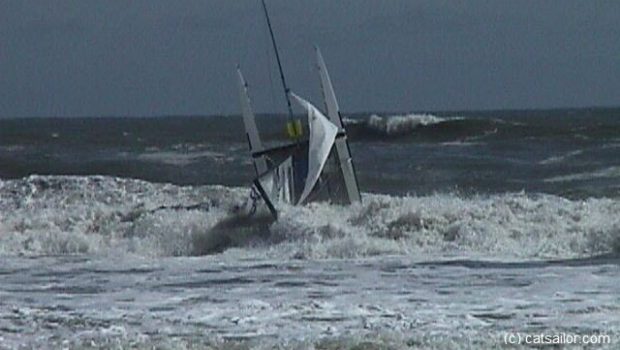


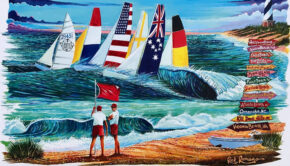
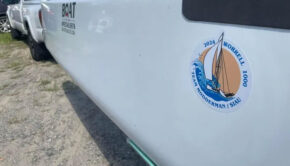
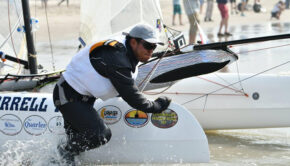
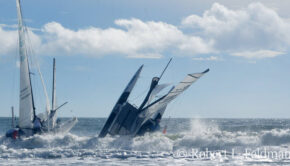
 We’ll keep your information safe.
We’ll keep your information safe.